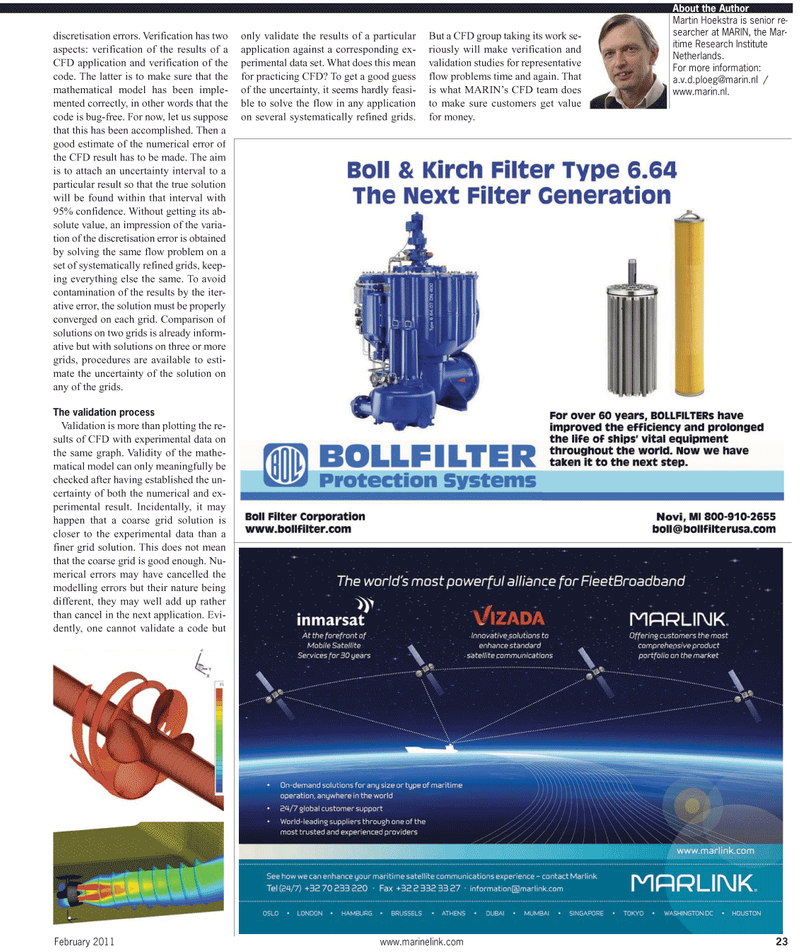
Page 23: of Maritime Reporter Magazine (February 2011)
Cruise & Passenger Vessel Annual
Read this page in Pdf, Flash or Html5 edition of February 2011 Maritime Reporter Magazine
discretisation errors. Verification has two aspects: verification of the results of a
CFD application and verification of the code. The latter is to make sure that the mathematical model has been imple- mented correctly, in other words that the code is bug-free. For now, let us suppose that this has been accomplished. Then a good estimate of the numerical error of the CFD result has to be made. The aim is to attach an uncertainty interval to a particular result so that the true solution will be found within that interval with 95% confidence. Without getting its ab- solute value, an impression of the varia- tion of the discretisation error is obtained by solving the same flow problem on a set of systematically refined grids, keep- ing everything else the same. To avoid contamination of the results by the iter- ative error, the solution must be properly converged on each grid. Comparison of solutions on two grids is already inform- ative but with solutions on three or more grids, procedures are available to esti- mate the uncertainty of the solution on any of the grids.
The validation process
Validation is more than plotting the re- sults of CFD with experimental data on the same graph. Validity of the mathe- matical model can only meaningfully be checked after having established the un- certainty of both the numerical and ex- perimental result. Incidentally, it may happen that a coarse grid solution is closer to the experimental data than a finer grid solution. This does not mean that the coarse grid is good enough. Nu- merical errors may have cancelled the modelling errors but their nature being different, they may well add up rather than cancel in the next application. Evi- dently, one cannot validate a code but only validate the results of a particular application against a corresponding ex- perimental data set. What does this mean for practicing CFD? To get a good guess of the uncertainty, it seems hardly feasi- ble to solve the flow in any application on several systematically refined grids.
But a CFD group taking its work se- riously will make verification and validation studies for representative flow problems time and again. That is what MARIN’s CFD team does to make sure customers get value for money.
February 2011 www.marinelink.com 23
About the Author
Martin Hoekstra is senior re- searcher at MARIN, the Mar- itime Research Institute
Netherlands.
For more information: [email protected] / www.marin.nl.

 22
22

 24
24
